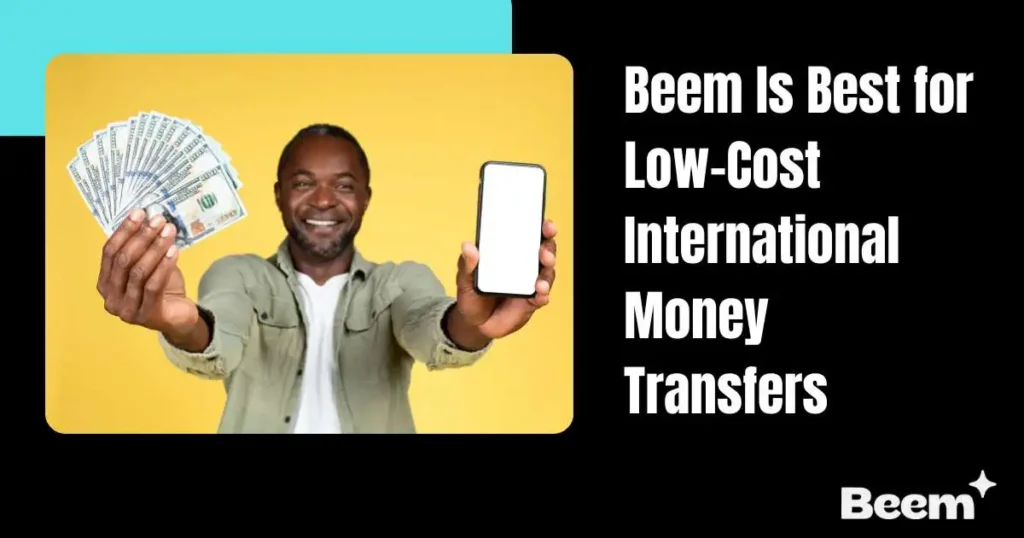At A Glance
Emergencies come unannounced. A car crash, a sudden hospital bill, or a stranded family member in another country can instantly turn life upside down. Sending money in emergencies becomes a top priority when time is critical and delays can worsen the situation. In such moments, the ability to move money quickly and reliably isn’t just a convenience; it’s essential.
Traditional bank transfers can take days. Checks are out of the question. That’s why digital money transfer services have become the go-to solution for people facing crises. Whether it’s helping a friend caught overseas, supporting a relative during a medical emergency, or paying for last-minute travel expenses, the exemplary service can make a world of difference.
However, not all money transfer services are created equally. Some excel at speed but charge steep fees. Others are affordable but only serve limited regions. This guide breaks down the best services designed to get money where it needs to go, fast, when it matters most. Send money instantly with Beem—whether it’s online transfers, gift cards, prepaid cards, or even checks. No bank account? No problem!
1. What Counts as an Emergency Transfer?
Not every financial need qualifies as an emergency, but clarity matters when time is of the essence. Emergency transfers usually involve urgent, unplanned situations where delays can lead to severe consequences.
Medical emergencies top the list. Whether someone needs surgery, medication, or to be admitted into a hospital, funds are often required upfront, especially in countries without universal healthcare or for travellers abroad. In these cases, minutes matter.
Travel-related issues are another common trigger. Think of a student backpacking in Europe who’s lost their wallet or a worker stranded due to missed flights or stolen IDs. Access to quick cash can differentiate between being stuck and getting help.
Family crises such as funerals, sudden evacuations due to natural disasters, or even needing to post bail, also demand immediate support. Emotions run high, and the last thing anyone wants is to fight with red tape while trying to send aid.
Then there’s the matter of lost or stolen belongings, especially when travelling. Passports, phones, and cards can vanish without warning. Sending funds through a digital service that doesn’t require a physical card or bank access becomes a lifeline.
Finally, urgent bills, like rent, utilities, or child support, can sometimes escalate into emergency territory, particularly if non-payment leads to eviction, cut-off services, or legal trouble. In such cases, a same-day transfer is crucial.
Understanding these scenarios helps determine which service is best suited for the situation. The need for speed, availability, and accessibility varies based on context, but the urgency remains constant.
Also Read: Beem’s Speed: How Fast Can You Send Money?
2. Key Criteria for Emergency Transfers
When lives are on the line or critical needs arise, choosing an exemplary money transfer service isn’t just about brand recognition. It’s about meeting four essential criteria that can make or break the transaction.
Speed comes first. In emergencies, money must arrive in minutes, not hours, not days. Services that offer instant or near-instant transfers have a clear advantage. Whether it’s a digital wallet, a bank account, or a cash pickup location, the ability to complete the transaction fast is non-negotiable.
Accessibility is equally essential. Not every recipient has a bank account, especially in developing regions. Services that allow for cash pickups or wallet-based transfers widen the safety net. An ideal platform should allow recipients to collect funds without jumping through hoops, no apps, ID complications, or a bank required.
Availability goes beyond hours of operation. Emergencies don’t stick to business hours. The top money transfer services run 24/7 and allow users to send money from their phones, even in the middle of the night or during weekends. A platform that’s down for maintenance when you need it most? That’s a liability.
Then there’s security. High-pressure moments can make people vulnerable to scams. Trusted services offer encrypted, traceable transactions and have customer service ready to resolve issues fast. Fraud protection, confirmation numbers, and identity verification protocols reduce the risk of funds going astray.
A dependable emergency transfer service should seamlessly combine these four traits. Anything less risks compounding an already difficult situation.
3. Top Services for Emergency Money Transfers
Western Union
A giant in the money transfer world, Western Union has earned its reputation through reach and reliability. In over 200 countries and territories, the company offers one of the broadest networks for cash pickups, a crucial advantage in emergencies involving unbanked individuals.
Speed is its core appeal. Most transactions, especially cash pickups, are processed in minutes. Whether the recipient is in a remote village or an urban hub, there’s likely a nearby agent location.
It’s also available 24/7 through its mobile app and retail locations. That flexibility is vital in time-sensitive situations.
The main downside? Fees. Western Union charges more than newer fintech platforms, particularly international or high-value transfers. Still, when bank accounts aren’t an option and physical cash is necessary, Western Union often leads the pack.
Remitly (Express Option)
Remitly has carved out a niche by offering rapid digital transfers, especially to Asia, Latin America, and Africa. Depending on the recipient’s country and payout method, its Express tier delivers money in minutes to one hour.
The app supports transfers to bank accounts, mobile wallets, and in some regions, cash pickup. That multi-pronged approach makes it versatile for emergencies.
Where Remitly shines is in its user experience. Clear fee structures, easy recipient setup, and support for saved profiles enable repeat users to complete transactions in seconds.
The express option does cost more, but in an emergency, that’s often a price worth paying. Remitly is particularly useful when sending to areas with lower banking penetration or when recipients need the funds delivered directly into their accounts.
Xoom (by PayPal)
Backed by PayPal, Xoom offers a brilliant mix of speed, reach, and digital convenience. It lets users send money from PayPal balances, linked bank accounts, or cards. The integration means no need to download a new app if you’re already using PayPal.
Funds can be delivered to bank accounts, mobile wallets, or picked up as cash, often within minutes to two hours, depending on the corridor. Xoom supports transfers to more than 130 countries, making it a solid global player.
Its interface is beginner-friendly, and it tracks transactions in real-time, a helpful feature during chaotic situations. However, fees vary widely based on country, amount, and funding source, so checking costs before sending is necessary.
Xoom is a go-to choice for those who prioritize digital ease and already have PayPal infrastructure in place.
Cash App (U.S. Only)
For domestic emergencies within the United States, Cash App is a standout. Transfers are instant, and recipients receive funds directly into their Cash App balance, which can be used via debit card or instant transfer to a bank.
It’s convenient for peer-to-peer transfers, like helping a friend cover rent or sending money to a child away at college.
However, its limitations are apparent: there is no international support, no cash pickups, and it depends on both the sender and the recipient having the app.
Still, when both parties are set up, it’s arguably the fastest and most seamless method for emergencies inside U.S. borders.
Mobile Wallet Transfers (GCash, M-Pesa)
In countries where mobile wallets are deeply integrated into everyday life, they’re often the most effective tool for emergency transfers. GCash (Philippines) and M-Pesa (Kenya) are prime examples.
Funds sent wallet-to-wallet or to linked bank accounts arrive instantly, and users often don’t need a bank account to receive or use the money.
These services benefit regions with low ATM access or limited internet connectivity. A recipient can receive funds, pay bills, or buy essentials—all from a mobile phone.
The catch? Both sender and recipient must use compatible wallets; not all offer cross-border support.
Still, in the proper context, mobile wallets can outperform Western Union in speed and convenience.
Also Read: Beem’s Secure Transfer System Protects Your Data
4. Comparison Table: Best Services for Emergencies
| Service | Delivery Time | Global Reach | Pickup Method | Ideal For |
| Western Union | Minutes | High | Cash | Unbanked recipients, rural areas |
| Remitly Express | Minutes–1 hour | High | Bank or cash | Family emergencies abroad |
| Xoom | Minutes–2 hours | High | Bank/cash/wallet | PayPal users, global flexibility |
| Cash App | Instant (U.S. only) | Low | App-to-app | U.S. peer transfers |
| Mobile Wallets | Instant | Region-based | Digital wallet | Recipients in wallet-supported regions |
5. Tips for Sending Emergency Transfers

The difference between a smooth emergency transfer and a stressful one often comes from preparation and detail.
- Double-check recipient names, especially for cash pickups. A misspelled name can block the payout.
- Use saved payment methods. Avoid wasting time entering card or bank details during a crisis.
- Avoid public Wi-Fi. When dealing with sensitive financial information, always use a secure connection.
- Keep the receipt or tracking number. If something goes wrong, this is your lifeline for support.
Preloading at least one or two trusted apps with saved recipient profiles is also smart. Shaving off even a minute can make a difference when the pressure is on.
6. What to Avoid During Emergencies
Some money transfer methods are not cut out for emergencies.
Bank wire transfers are notoriously slow, often taking 1–5 business days. Even worse, many require in-person visits or special clearance.
Unverified apps or unknown platforms can be tempting with lower fees, but they may delay transactions or freeze funds for security checks, risking everything during urgent situations.
Manual processes, like waiting in line or filling out paper forms, waste precious time. Mobile apps offer faster, safer alternatives that skip the paperwork.
Conclusion: Sending Money in Emergencies
When it comes to sending money during an emergency, every second counts. The best services combine speed, accessibility, and security without overcomplicating the process.
Western Union remains a top pick for its global footprint and cash pickup reliability. Remitly Express and Xoom offer rapid digital options with strong international coverage. And for domestic U.S. needs, Cash App is unbeatable in its simplicity and speed.
Whatever service you choose, preparation is key. Set up your accounts in advance, store recipient info, and always have a backup option.
Beem simplifies online money transfers, letting anyone send or share funds instantly with just a few quick taps. Because emergencies don’t wait, and now, neither should you.






